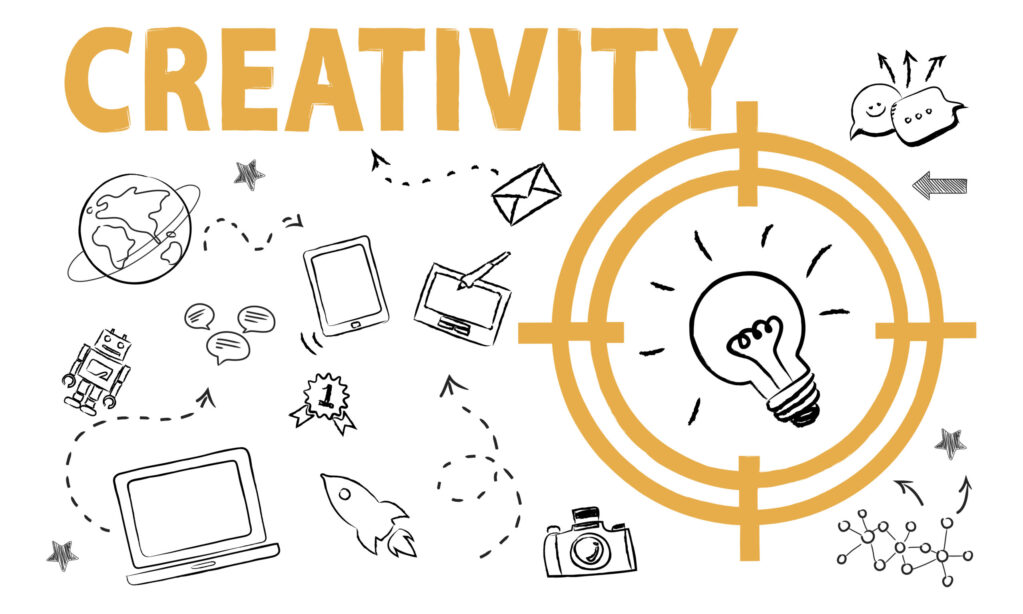Creative thinking is a mental process that involves generating new, innovative, and imaginative ideas. It’s the ability to approach problems and challenges from unique perspectives, leading to innovative solutions and breakthroughs. In a rapidly evolving world, creative thinking has become an invaluable skill in various domains, from business and technology to art and education. In this article, we’ll delve deep into the concept of creative thinking, explore its benefits, and provide practical tips to help you harness its power in your personal and professional life.
Table of Contents

The Importance of Creative Thinking
In a world that thrives on innovation, creative thinking is more critical than ever before. Here are a few reasons why it holds immense importance:
- Problem Solving: Creative thinking empowers individuals to find novel solutions to complex problems. By considering unconventional angles and ideas, individuals can break through mental barriers and discover innovative approaches that may not be apparent through traditional methods.
- Innovation: The driving force behind progress and innovation is creative thinking. It’s responsible for groundbreaking inventions, disruptive technologies, and new business models that reshape industries.
- Adaptability: Creative thinkers are better equipped to adapt to changing circumstances. Their ability to view situations from different perspectives allows them to find alternative routes when facing obstacles.
- Effective Communication: Creative thinking enhances communication skills by enabling individuals to express ideas in unique and engaging ways. This skill is invaluable in various settings, from marketing campaigns to interpersonal interactions.
- Personal Growth: Engaging in creative thinking exercises enhances cognitive abilities and keeps the mind sharp. It also fosters a sense of accomplishment and boosts self-confidence.
Nurturing Creative Thinking
- Embrace Curiosity: Curiosity is the foundation of creative thinking. Cultivate a curious mindset by asking questions, exploring new topics, and seeking to understand the world around you.
- Diverse Knowledge: Creative ideas often arise from the intersection of different fields. Expand your knowledge base in various areas to create connections that can lead to innovative insights.
- Open-Mindedness: Approach challenges with an open mind, devoid of preconceived notions. This enables you to consider alternative viewpoints and solutions.
- Mindfulness and Reflection: Take time to reflect on your thoughts and experiences. Mindfulness practices can help you tap into your subconscious mind and uncover hidden connections.
- Brainstorming: Engage in structured brainstorming sessions, either individually or in groups. Encourage the generation of a wide range of ideas, even those that seem unconventional.
Techniques to Enhance Creative Thinking
- Lateral Thinking: Developed by Edward de Bono, this technique involves approaching problems from unconventional angles to uncover innovative solutions. It encourages breaking free from linear thought patterns.
- Mind Mapping: Create visual representations of ideas using mind maps. This technique allows you to visually organize thoughts, identify relationships between concepts, and stimulate creative thinking.
- Reverse Thinking: Start with the desired outcome and work backward. This approach can lead to unexpected insights and solutions by challenging conventional thinking.
- Random Word Association: Choose a random word and brainstorm ideas that relate to it. This technique encourages the brain to make unique connections and associations.
- Role Reversal: Step into someone else’s shoes, whether it’s a historical figure, a fictional character, or even a competitor. This perspective shift can lead to fresh insights.
Fostering a Creative-Friendly Environment
- Embrace Failure: Creative thinking involves experimentation, which inherently includes the possibility of failure. Encourage a culture where failures are viewed as learning opportunities rather than setbacks.
- Diverse Teams: Collaborate with individuals from diverse backgrounds and skill sets. Diversity brings a range of viewpoints to the table, fostering innovative discussions.
- Physical Environment: Create a workspace that stimulates creativity. Incorporate elements like color, art, and natural light to inspire imaginative thinking.
- Time for Play: Allowing time for play and relaxation can stimulate creative thinking. Engaging in activities like doodling, walking, or playing games can help unlock fresh ideas.
Applying Creative Thinking in Daily Life
- Problem-Solving: Approach challenges by considering various perspectives and brainstorming a multitude of potential solutions.
- Innovation: Continuously seek ways to improve processes, products, or services by thinking outside the box.
- Decision Making: When making decisions, explore both traditional and unconventional options to arrive at the best choice.
- Communication: Use creative approaches to effectively convey your ideas and messages to captivate your audience.
- Continuous Learning: Engage in lifelong learning to expose yourself to new ideas and stimulate your creative thinking.
Here are some examples of creative thinking
1. Problem-Solving:
Traditional Approach: A company is facing declining sales for a particular product. The team focuses on lowering the price to attract customers.
Creative Approach: The team holds a brainstorming session and realizes that the product’s packaging and presentation are outdated. They come up with the idea of redesigning the packaging to make it more appealing and highlight the product’s unique features. This leads to an increase in sales as customers are drawn to the improved presentation.
2. Innovation:
Traditional Approach: A car manufacturer is focused on improving the fuel efficiency of its vehicles by optimizing the engine.
Creative Approach: The manufacturer decides to take a completely different approach and explores the possibility of creating a hybrid vehicle that runs on both electricity and gasoline. This innovative concept not only improves fuel efficiency but also taps into the growing demand for environmentally friendly transportation options.
3. Communication:
Traditional Approach: A teacher is delivering a history lesson using a standard lecture format.
Creative Approach: The teacher engages the students by transforming the classroom into a historical setting. They encourage students to role-play as historical figures and participate in interactive discussions. This creative approach not only makes the lesson more engaging but also helps students connect emotionally with the material.
4. Product Design:
Traditional Approach: A furniture designer creates a standard coffee table with four legs and a flat surface.
Creative Approach: The designer envisions a coffee table that doubles as a storage unit. They add hidden compartments and drawers within the table’s structure, allowing users to store books, magazines, and other items. This creative twist on a traditional design adds functionality and uniqueness to the product.
5. Marketing:
Traditional Approach: A restaurant advertises its dishes with standard images of food on its menu.
Creative Approach: The restaurant hires a local artist to create vibrant and colorful illustrations of each dish. The menu becomes a work of art, capturing the essence of the restaurant’s cuisine and creating a memorable dining experience for customers.
6. Personal Growth:
Traditional Approach: A student studies only within the confines of their major subjects.
Creative Approach: The student decides to explore unrelated disciplines, such as taking a painting class or learning to play a musical instrument. The new experiences not only provide a creative outlet but also inspire fresh perspectives that enhance their main area of study.
7. Conflict Resolution:
Traditional Approach: Two coworkers have a disagreement over a project’s direction, leading to tension.
Creative Approach: A mediator suggests a team-building activity that requires the coworkers to collaborate on a creative project unrelated to work. Through this activity, they learn to communicate effectively, understand each other’s strengths, and resolve their differences constructively.
8. Entrepreneurship:
Traditional Approach: A budding entrepreneur starts a typical e-commerce store selling clothing items.
Creative Approach: The entrepreneur identifies a gap in the market for sustainable fashion and creates a platform that connects customers with local artisans who use eco-friendly materials. This innovative approach not only promotes sustainable practices but also supports local communities.
These examples illustrate how creative thinking can lead to novel solutions, innovative products, engaging communication, and transformative experiences across various domains. By embracing creative thinking, individuals and organizations can unlock endless possibilities and drive positive change.
Creative thinking is a skill that can be nurtured and developed over time. By embracing curiosity, adopting different techniques, and creating a conducive environment, you can harness the power of creative thinking to transform your personal and professional life. In a world that thrives on innovation, those who dare to think creatively are the ones who pave the way for progress, change, and success. So, unleash your imagination, challenge the norm, and let your creativity flourish.

